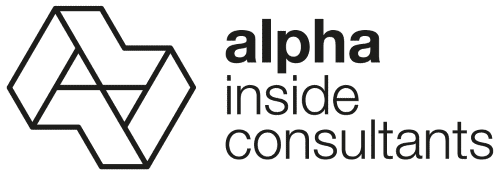On 13 November 2024, Rödl & Partner held the event ‘Operator responsibility in practice’ on the premises of Nürnberger Versicherung. The event was thematically framed by the master's thesis of Philipp Stuiber (M.A. Facility Management, gefma Sustainability Auditor and Head of the gefma Junior Lounge Northern Bavaria).
In his thesis, Philipp Stuiber assessed the Rödl & Partner Campus in Nuremberg based on the criteria of the gefma 160 guideline, focussing on the urgency of sustainability and the serious approach to climate change. The four key topics of ‘energy management’, ‘resource conservation’, ‘legal compliance’ and ‘sustainability strategy’ formed the framework for the keynote speeches by the speakers, who provided the participants with insights, solutions and challenges from practice. Translated with DeepL.com (free version)
Core topic 1: Energy management
Matthias Klingert, Head of HVAC at NÜRNBERGER Versicherung, introduced us to the Business Tower Nuremberg (BTN). Construction began in 1998 and was completed in 2000. Since then, numerous modernisations and improvements have been continuously implemented. The focus here has been on optimising energy management. The aim is to reduce energy consumption in the operation of a building without restricting its use - the measures should not be at the expense of the comfort or functionality of the building. Nürnberger Versicherung has taken a number of measures to optimise energy consumption, covering various aspects of sustainability and efficiency in its operations. The following aspects were explained in more detail by Sebastian Gose, Project Manager, as key fields of action in the area of energy optimisation. Translated with DeepL.com (free version)
Promotion of electromobility
Electromobility was actively promoted with the installation of 30 wall-mounted charging points and utility meters. These charging points allow employees and visitors to charge their electric vehicles on site.
Installation of photovoltaic systems
Photovoltaic systems have been installed on the roof of the Directorate General in order to cover part of the company's own electricity requirements with self-generated energy. The aim of these systems is to achieve a maximum in-house electricity generation of 8%, while at the same time reducing the running costs for external electricity procurement and also reducing dependence on fossil fuels. Nürnberger Versicherung has benefited from low investment costs, as the planning, financing and installation of the systems is carried out by partners such as N-ERGIE. In addition, Nürnberger Versicherung provides the roof areas and leases them free of charge. Before the photovoltaic systems were installed, several expertises were also obtained which, among other things, examined the possible effects of the systems on their surroundings, for example the distraction of employees, the shading of windows or possible reflections that could be caused by the PV systems.
Optimisation of building automation and building management systems
Another important step towards energy optimisation was the renovation and optimisation of the building automation (BA). This ensures the automatic control and optimisation of the technical building equipment, such as heating, ventilation, air conditioning and energy supply systems. With building management systems (BMS), a centralised software solution has been implemented that enables bundled monitoring and control of these systems. In the second quarter of 2020, individual manufacturers have already announced the discontinuation of their products, as some spare parts are no longer being produced. A change of systems is therefore necessary. By refurbishing older parts of the Business Tower Nuremberg, spare parts could be used for the systems that have not yet been refurbished. However, the existing old stock of spare parts is slowly being used up. A complete refurbishment is usually carried out after around 20 years. The aim is to complete the necessary measures by the second quarter of 2027.
Electricity savings through continuous optimisation
"Nürnberger Versicherung" has continuously reduced its electricity consumption in recent years by implementing various efficiency measures. One example of this is the optimisation of building automation in 2007, which led to a reduction in electricity consumption of 2 million kWh. Other measures such as the renewal of the cooling system and adjustments in the wake of the coronavirus pandemic (e.g. increased mobile working) also contributed to savings. As a result, the electricity consumption of the entire property was reduced from 11.5 million kWh in 2006 to 6.1 million kWh in 2022. In order to further reduce energy costs, Nürnberger Versicherung relies on tranche procurement of electricity. This strategy helps to reduce the price risk and ensures a transparent price structure. However, this approach also requires a high level of expertise and increases the administrative effort required to ensure efficient electricity procurement and utilisation.
Remote reading of meters: Innovative solutions to increase efficiency
N-ERGIE Immobilien GmbH was experiencing difficulties with meters that were installed in water shafts and therefore often filled with water and caused interference with radio and data transmission. Patrick Horlamus, Head of HVAC, and his team presented us with a solution. In addition, the introduction of remote reading from 2021 made it possible to optimise the heat meters. From 2024, domestic water meters with the new ‘myoti’ radio technology were introduced. The radio network comprises 30 receiving stations. With remote reading, alarm messages such as leaks, air in the pipes, undersized meters, tampering and frost alarms can now be recorded, which was previously not possible as the meters were not monitored but only read manually once a year. A positive side effect: the workload for the company's own employees is significantly reduced and manual meter readings and reports are no longer necessary.
Core topic 2: Saving resources
As part of FutureWork:N, Nürnberger Versicherung is implementing innovative space management measures to save resources. The office space was utilised more efficiently through a targeted redesign of the working environments with a focus on the interactions between people, working environment and methods. The introduction of activity-based working allows employees to choose flexibly between different functional areas depending on their activity - whether for concentrated work, communication, collaboration or retreat. During a guided tour of the building, we were able to take a closer look at and experience the individual functional areas. The transformation is complemented by mobile working, which is used by 60% of the workforce, and hybrid-capable equipment, which has been implemented 100%. This agile transformation led to an overall reduction in office space of 36%. The combination of functional space utilisation and flexible working methods not only creates a modern working environment, but also makes a significant contribution to conserving resources. If you would also like to organise your working environment efficiently and sustainably, find out more about our services here.
Core topic 3: Legal compliance
Ulrich Glauche, Associate Partner at Rödl & Partner, and Stefanie Weißbeck, lawyer at Rödl & Partner, emphasised that the implementation of an appropriate standard is necessary to ensure the legal compliance of facility services. However, this is proving challenging, as around 60 changes in a wide range of regulations had to be taken into account in the period from November 2023 to November 2024 alone. The use of an information system such as REG-IS from Rödl & Partner can provide support here by providing legal and technical expertise on the regulations applicable to facility management in Germany and summarising requirements for recurring inspection services, among other things.
Core topic 4: Sustainability strategy
Engelbert Tietz, Technical Director at KUKA, presented the ‘Sustainability@KUKA’ sustainability strategy. The aim of this initiative is to achieve a 40 per cent reduction in CO₂ emissions by 2030, create modern working environments and monitor supply chains more closely. The key measures that have been communicated to all 100 locations in 50 countries include the electrification of the vehicle fleet with a target of 100% by 2030 and the purchase of electricity from photovoltaic systems. Currently, 30% of the vehicle fleet is already electrified, employees are being sensitised and both new and existing buildings are being designed in accordance with the German Building Energy Act (GEG).
The previous example from Nürnberger Versicherung is an impressive illustration of how energy management and building automation can work together to shape a sustainable future in building operations. The introduction of photovoltaic systems, electromobility solutions and continuous optimisation of building automation has significantly reduced energy consumption and lowered CO₂ emissions. These initiatives not only show how efficiency gains can be achieved through technical innovations such as remote meter reading and the use of Myoti technology, but also how important it is to fulfil legal requirements and invest in a future-proof infrastructure.
The simultaneous implementation of resource conservation measures through innovative working methods, such as activity-based working and flexible office space, emphasises the sustainable approach that Nürnberger Versicherung is pursuing. These measures enable the efficient utilisation of space and resources and contribute to the long-term reduction of the ecological footprint.
However, challenges such as refurbishing outdated building automation systems or complying with the constantly changing legal framework show that sustainable building management is an ongoing process that requires expertise and resources. This makes it all the more important for companies to rely on innovative solutions and legal/technical support in order to realise their sustainability goals efficiently. Nürnberger Versicherung and companies such as KUKA, which have set a clear target for CO₂ reduction and the electrification of their vehicle fleet with their ‘Sustainability@KUKA’ strategy, show that a successful and sustainable future in building operations is possible with the right strategy and compliance with legal requirements.





